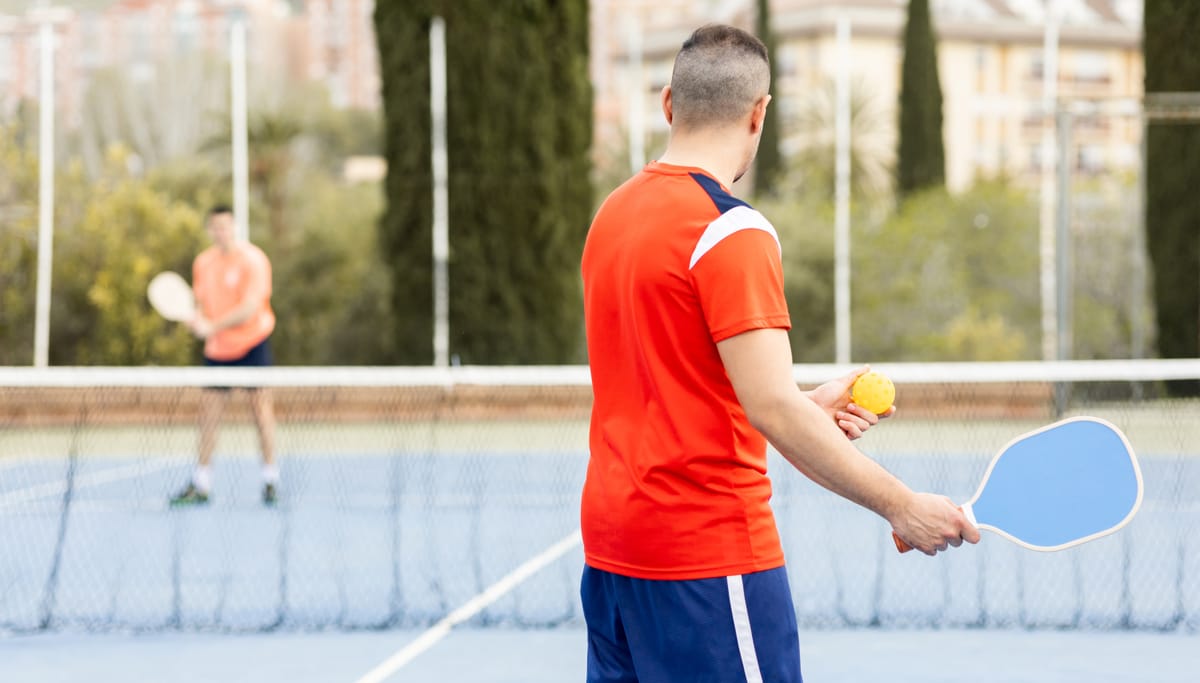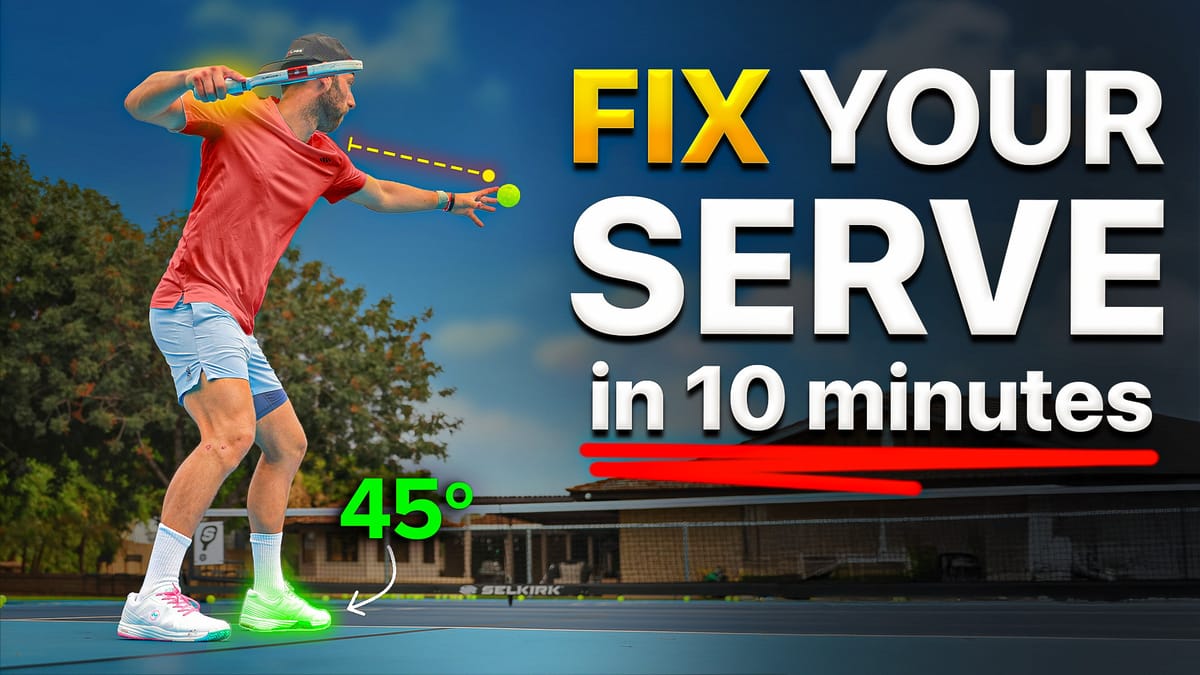
ThatPickleballSchool

Hey guys, it’s Kyle from ThatPickleballSchool. In recreational pickleball, one of the most common mistakes players make is trying to hit every ball hard from the midcourt. Especially after missing a third shot drop or getting pushed into a defensive position, many players panic and swing away.
But here’s the truth: if you’re stuck between the baseline and the kitchen, swinging harder usually just makes things worse. The key to turning defense into offense is learning how to reset—a soft shot that lands in the kitchen or forces your opponent to hit up on the ball.
Why Resets Matter in Pickleball Doubles
When you’re the stronger player in a doubles match, you’ve got to be ready to cover for your partner. If they pop up a dink or a return, it’s your job to absorb pressure and extend the point.
This happens all the time. Someone hits a lob or a high dink, and now your team is in a bad position. Being able to reset from midcourt—especially when your opponents are at the kitchen line—is a skill that separates solid players from great ones.
Your goal with a reset is simple: buy time, neutralize the rally, and earn your way back to the kitchen line—the most dominant position on the court.
Common Mistakes Players Make on Resets
One of the biggest issues? Players try to flick their wrist or use big arm movements when they’re stuck in transition. That usually leads to balls going into the net or popping up too high.
Here’s what you should do instead:
- Avoid wrist flicks. Most players don’t have the control to flick with consistency. Your resets will be more reliable with a stable paddle and compact motion.
- Use two hands. Keeping your off-hand on the paddle adds control and stability. It keeps your paddle steady and reduces sloppy wrist action.
- Keep everything in front of you. Whether it’s forehand or backhand, avoid reaching or swinging wildly. Think of lifting the ball gently rather than hitting through it.
How to Train Better Reset Mechanics
To fix these habits, we started working on purposeful reps. Here’s the progression:
- Start with backhand resets. Most people struggle here. Begin with your paddle face open at about 45 degrees, using a compact, lifting motion with both hands on the paddle.
- Focus on compact swings. Tuck your elbows, keep your paddle between your shoulders, and avoid swinging out wide. Think “up, not out.”
- Create arc, not speed. Soften your grip. A looser hold lets the paddle absorb pace and adds a gentle lift to your shot instead of driving it into the net.
Paddle Down, Ball Up: The Reset Mindset
Here’s the mindset shift: the moment the ball goes up—whether it’s a lob, a pop-up, or a drive—you should be dropping your paddle and preparing to lift. This is the golden rule of resetting. Don’t try to do too much. Just lift.
And if you’re stuck back there, remember: the better miss is high. If you miss into the net, the point’s over. If you miss a little high, there’s still a chance they mess up their overhead or give you another ball to work with.

Another overlooked key? Stop moving when you hit. Whether you’re retreating or moving forward, you want to be still at the moment of contact. Too many players are trying to reset while still shuffling backward or sprinting forward.
The moment your opponent is about to hit, get balanced. Make contact in a still, controlled position. That’s how you gain consistency and stop handing out free points.
When to Reset vs. When to Attack
Here’s the difference: if the ball is below net height, it’s time to reset. If the ball is above net height—forehead level or higher—you can apply pressure.
Trying to attack balls that are low or coming at you with pace usually ends in disaster. You’ll be hitting up while your opponent is hitting down. That’s a losing exchange.
Know when to slow it down. Know when to strike. That’s maturity on the court.

Learning to Stay Patient in Transition
One of the breakthroughs we saw was the realization that you don’t have to get back to the kitchen line in one shot. It’s okay to reset two or three times before you move up.
Your job isn’t to force your way forward with every ball. Your job is to defend well, create a neutral point, and then work your way back up once you’ve earned it.
Resets at Higher Levels: Why They Matter Even More
At the pro level, you’d be surprised how many “putaways” come back. Players have incredible hands and court coverage. So if you think a hard hit is going to end the point, think again. You can’t rely on power alone.
That’s why being able to reset, stay in the point, and reestablish neutral—even after losing ground—is such a valuable skill.
You don’t need to win the point right away. You just need to play one more ball.
Think you know pickleball inside and out? Challenge yourself with ThatPickleball IQ Test and see if you can score a perfect 10 out of 10!
Related Articles:
Anuncie Aqui / Advertise Here
Sua marca para o mundo Pickleball! / Your brand for the Pickleball world!

 English
English  Spanish
Spanish  Portuguese
Portuguese  German
German  Italian
Italian  Japanese
Japanese  French
French  Polish
Polish  Russian
Russian  Netherlands
Netherlands  Hungarian
Hungarian  Turkish
Turkish  Videos
Videos  Pickleball Portal
Pickleball Portal









 English (US) ·
English (US) ·  Portuguese (BR) ·
Portuguese (BR) ·